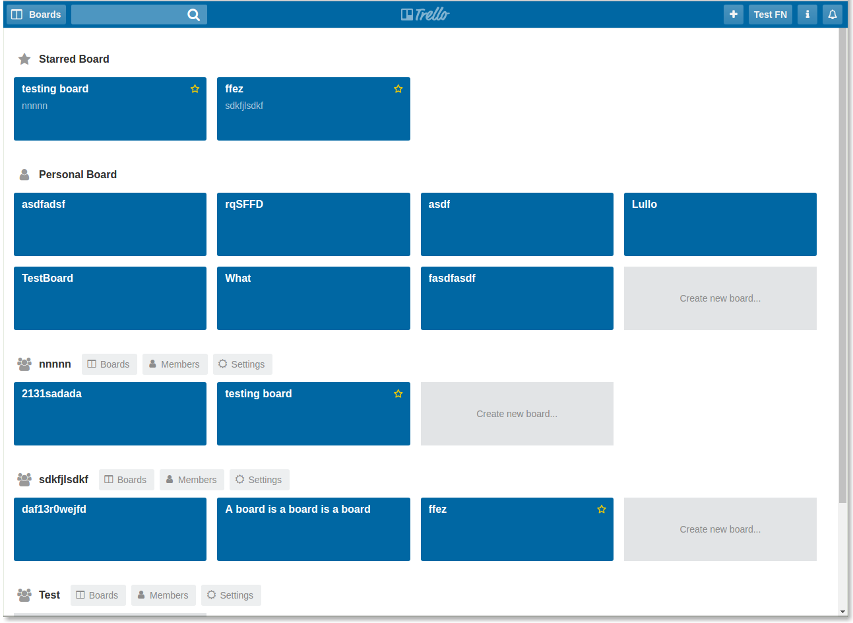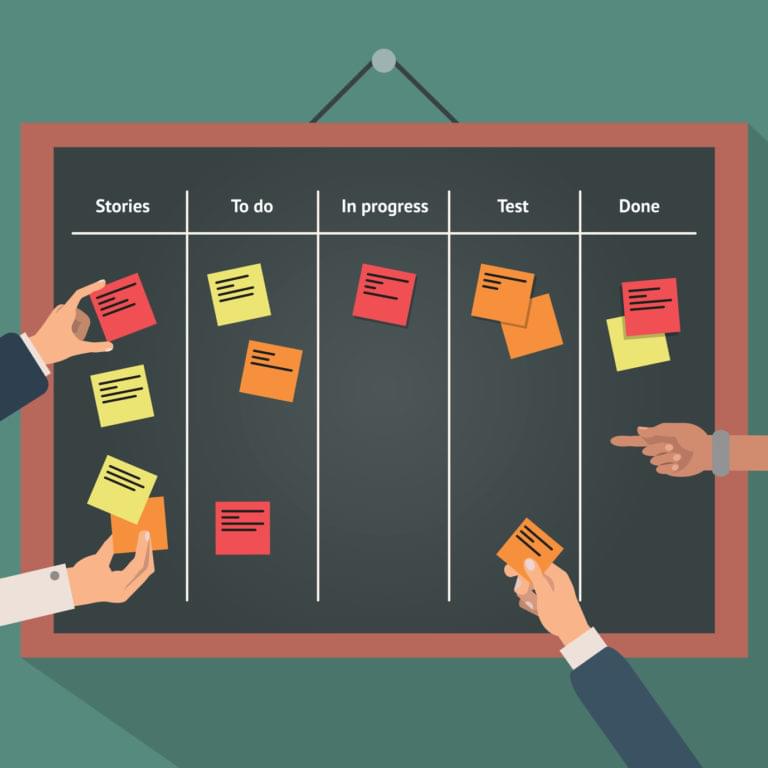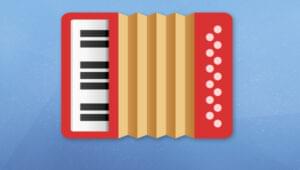A few weeks ago, I came across a developer sharing one of his side projects on GitHub: a Trello clone. Built with React, Redux, Express, and MongoDB, the project seemed to have plenty of scope for working on fullstack JS skills.
I asked the developer, Moustapha Diouf, if he’d be interested in writing about his process for choosing, designing, and building the project and happily, he agreed. I hope you’ll find it as interesting as I did, and that it inspires you to work on ambitious projects of your own!
Nilson Jacques, Editor
In this article, I’ll walk you through the approach I take, combined with a couple of guidelines that I use to build web applications. The beauty of these techniques is that they can be applied to any programming language. I personally use them at work on a Java/JavaScript stack and it has made me very productive.
Before moving on to the approach, I’ll take some time to discuss how:
- I defined my goals before starting the project.
- I decided on the tech stack to use.
- I setup the app.
Keep in mind that since the entire project is on GitHub (madClones), I’ll focus on design and architecture rather than actual code. You can check out a live demo of the current code: you can log in with the credentials Test/Test.

If you’re interested in taking your JavaScript skills to the next level, sign up for SitePoint Premium and check out our latest book, Modern JavaScript
Defining the Goals
I started by taking a couple of hours a day to think about my goals and what I wanted to achieve by building an app. A to-do list was out of the question, because it was not complex enough. I wanted to dedicate myself to at least 4 months of serious work (it’s been 8 months now). After a week of thinking, I came up with the idea to clone applications that I like to use on a daily basis. That is how the Trello clone became a side project.
In summary, I wanted to:
- Build a full stack JavaScript application. Come out of my comfort zone and use a different server technology.
- Increase my ability to architect, design, develop, deploy and maintain an application from scratch.
- Practice TDD (test driven development) and BDD (behavior driven development). TDD is a software practice that requires the developer to write test, watch them fail, then write the minimum code to make the test pass and refactor (red, green, refactor). BDD, on the other hand, puts an emphasis on developing with features and scenario. Its main goal is to be closer to the business and write a language they can easily understand.
- Learn the latest and the hottest frameworks. At my job, I use angular 1.4 and node 0.10.32 (which is very sad I know) so I needed to be close to the hot stuff.
- Write code that follows the principle of the 3R’s: readability, refactorability, and reusability.
- Have fun. This is the most important one. I wanted to have fun and experiment a lot since I was (and still am) the one in charge of the project.
Choosing the Stack
I wanted to build a Node.js server with Express and use a Mongo database. Every view needed to be represented by a document so that one request could get all the necessary data. The main battle was for the front-end tech choice because I was hesitating a lot between Angular and React.
I am very picky when it comes to choosing a framework because only testability, debuggability and scalability really matter to me. Unfortunately, discovering if a framework is scalable only comes with practice and experience.
I started with two proof-of-concepts (POCs): one in Angular 2 and another one in React. Whether you consider one as a library and the other one as a framework doesn’t matter, the end goal is the same: build an app. It’s not a matter of what they are, but what they do. I had a huge preference for React, so I decided to move forward with it.
Getting Started
I start by creating a main folder for the app named TrelloClone. Then I create a server folder that will contain my Express app. For the React app, I bootstrap it with Create React App.
I use the structure below on the client and on the server so that I do not get lost between apps. Having folders with the same responsibility helps me get what I am looking for faster:
- src: code to make the app work
- src/config: everything related to configuration (database, URLs, application)
- src/utils: utility modules that help me do specific tasks. A middleware for example
- test: configuration that I only want when testing
- src/static: contains images for example
- index.js: entry point of the app
Setting up the Client
I use create-react-app since it automates a lot of configuration out of the box. “Everything is preconfigured and hidden so that you can focus on code”, says the repo.
Here is how I structure the app:
- A view/component is represented by a folder.
- Components used to build that view live inside the component folder.
- Routes define the different route options the user has when he/she is on the view.
- Modules (ducks structure) are functionalities of my view and/or components.
Setting up the Server
Here is how I structure the app with a folder per domain represented by:
- Routes based on the HTTP request
- A validation middleware that tests request params
- A controller that receives a request and returns a result at the end
If I have a lot of business logic, I will add a service file. I do not try to predict anything, I just adapt to my app’s evolution.
Choosing Dependencies
When choosing dependencies I am only concerned by what I will gain by adding them: if it doesn’t add much value, then I skip. Starting with a POC is usually safe because it helps you “fail fast”.
If you work in an agile development you might know the process and you might also dislike it. The point here is that the faster you fail, the faster you iterate and the faster you produce something that works in a predictable way. It is a loop between feedback and failure until success.
Client
Here is a list of dependencies that I always install on any React app:
| Package | Description |
|---|---|
| redux | Predictable state container. |
| react-redux | Binds Rreact and Redux together. |
| redux-thunk | Middleware that allows you to write an action that returns a function. |
| redux-logger | Logger library for Redux. |
| react-router | Routing library |
| lodash | Utility library |
| chai (dev) | BDD, TDD assertion library for node. |
| sinon (dev) | Standalone test spies, stubs and mocks. |
| enzyme (dev) | Testing utility for React. |
| nock (dev) | HTTP mocking and expectations library for Node.js. |
| redux-mock-store (dev) | A mock store for testing your Redux async action creators and middleware. |
Some people might tell you that you do not always need redux. I think any descent app is meant to grow and scale. Plus tools you get from using redux change your development experience.
Server
Here is a list of dependencies that I always install on any Express app:
| Package | Description |
|---|---|
| lodash | |
| joi | Object schema description language and validator for JavaScript objects. |
| express-valiation | Middleware that validates the body, params, query, headers and cookies of a request. |
| boom | HTTP-friendly error objects. |
| cookie-parser | Parse Cookie header and populate req.cookies. |
| winston | Async logging library. |
| mocha (dev) | Test framework for Node.js & the browser |
| chai (dev) | |
| chai-http (dev) | HTTP response assertions. |
| sinon (dev) | |
| nodemon (dev) | Watches and automatically restarts app. |
| istanbul (dev) | Code coverage. |
Building the App
I start by picking a screen that I want to develop and list down all the features the user has access to. I pick one and start the implementation.
After a screen and/or feature is developed, I take some time to reflect on the added code and refactor if needed.
Example: The Home Screen
Let’s illustrate everything that I said above with an example. I develop all of my screens and features by considering the front-end and the back-end as two separate entities. I always start with the front-end, because it helps me know exactly what needs to be displayed. It is then very easy to head to the server and implement the database model and add the business logic.
First, I write down a feature description and add a bunch of scenarios to it. Here’s an example for the purpose of the article:
Feature: In the home view, I should see my name in the header and a list of my boards.
Scenario: I can see my name in the header
Given I am on the home
Then I should see my user name in the header
With this basic scenario in mind, let’s look at how I’d work on the home view.
Client-side
Using the Component-Driven Development (CDD) methodology, combined with BDD, helps split views into small components, making sure they are decoupled and reusable.
First of all, I build a static page with mocked data written in plain text and I style the page with CSS.
Second, I test that:
- The component renders correctly
- Props logic is handled correctly
- Event listeners (if any) are triggered and call the appropriate methods
- The component receives state from the store
Finally, I create a Header User component and container and refactor the data that I mocked earlier in the Redux module initial state.
Since I am using the ducks structure, I can focus on one view at a time. If I notice that two views share the same data I can lift up my state and create a higher module that holds all that data. The final Redux state of the app consists of all the data I mocked.
Once all my scenarios pass, I look at my component and refactor it if I notice that it is very similar to another component that I already created. I can either start by refactoring the old component before adding the new one or I can just add the new component so that I can fail fast and think about a more elegant solution later.
I did not waste my time guessing or thinking about what the user needed to see. I can just build my view then decide on what data needs to be displayed. It is easier to react to the design and think while building rather than trying to think in advance about what needs to be displayed. In my experience, it sometimes adds a lot of overhead and unnecessary meetings. As long as you keep reusability in mind you will be fine.
Server-side
The Redux store model that I come up with is crucial, because I use it to design my database and then code my business logic. Due to the work done on the view, I know the homepage needs to fetch the user’s name and boards. I noticed that I have personal boards and organization boards which means that I can separate these two entities and have two different schemas. The main goal is to work with normalized data and have all the heavy lifting done by the server so that I do not have to think about it.
CRUD (create, read, update, delete) is the basic set of operations any app needs, but I do not blindly add them to all of my routes. Right now, what I need to do is fetch data, so I just implement read. I can then write a Mongo query that adds a user to my database later.
Conclusion
I hope you enjoyed my approach to building full-stack applications. My main advice is never be afraid to do big refactors. I can’t count the number of times I changed my app file structure just because I knew it would not be scalable: details like the folder name, the folder depth, the way they are grouped by feature always make the difference.
I am never afraid to make mistakes because they help me learn: the faster I fail, the faster I learn, the faster I grow. If I make 100 mistakes and I learn from them, then I know 100 different ways of avoiding those errors again.
When I notice something that I don’t like, I fix it right away or in the next few days. Since I test my code, I can quickly tell whether or not I am breaking functionality that works.
Einstein said that “once you stop learning you start dying” and I believe that once you stop making mistakes you stop learning. Fail, learn and keep living.
What are my future plans?
I keep working on my project because it is always a work in progress. Just like a real app, it is in continuous change. My plans are to:
- Move my monolith project to a mono repo with a server based around microservices. I came up with the decision while working on my HipChat clone. I noticed that I was duplicating a lot of code for the same authentication logic: microservices were the obvious choice. Ctrl-C, Ctrl-V are not your friend in programming.
- Deploy micro services on Kubernetes.
- Move the HipChat clone to the mono repo and build an app with Vue.js.
- Start looking into Electron and React Native.
- Add continuous integration (CI) and deployment with Travis.
- Learn TypeScript.
How do I manage to keep up?
I have a very strict routine:
- Monday through Thursday: practice algorithms on HackerRank and GeeksforGeeks, write documentation for my weekend work, learn new languages, read technical books, and listen to podcasts.
- Friday through Sunday: work on new features and/or fix bugs on my apps
I don’t spend all of my free time working on these. During weekdays, 1-2 hours per day is rewarding enough. The weekend, though I do not restrict myself. As long as I have time, I’ll work on the project: I could be writing code, experimenting with a tool or just reading documentation.
Coding is an art and a craft and I take pride in writing the least code possible that works, while keeping it performant and elegant.
Read next: The Anatomy of a Modern JavaScript Application
Frequently Asked Questions (FAQs) about Fullstack JavaScript Trello Clone
What is a Fullstack JavaScript Trello Clone?
A Fullstack JavaScript Trello Clone is a replica of the popular project management tool, Trello, built using full-stack JavaScript. This means that both the front-end and back-end of the application are developed using JavaScript. The clone mimics the functionality of Trello, allowing users to create boards, lists, and cards to manage their tasks and projects. It’s a great way to learn full-stack JavaScript development as it involves various aspects such as user authentication, database management, and client-server communication.
How can I start building a Fullstack JavaScript Trello Clone?
To start building a Fullstack JavaScript Trello Clone, you need to have a basic understanding of JavaScript and its frameworks. You will also need to install Node.js and MongoDB on your system. The project involves setting up a server using Express.js, creating a database using MongoDB, and developing the front-end using React.js. You can follow the step-by-step guide provided in the article to build your own Trello clone.
What technologies are used in building a Fullstack JavaScript Trello Clone?
The Fullstack JavaScript Trello Clone is built using several technologies. On the front-end, React.js is used to create the user interface. Redux is used for state management. On the back-end, Express.js is used to set up the server, and MongoDB is used as the database. Additionally, Mongoose is used to model the application data, and Passport.js is used for user authentication.
Can I customize the Fullstack JavaScript Trello Clone?
Yes, you can customize the Fullstack JavaScript Trello Clone according to your needs. Once you understand the basic structure and functionality of the application, you can add new features, modify the existing ones, or change the user interface design. This can be a great way to practice and improve your full-stack JavaScript development skills.
What is the purpose of using Redux in the Fullstack JavaScript Trello Clone?
Redux is used in the Fullstack JavaScript Trello Clone for state management. It helps to manage and track the state of the application, making it easier to debug and test. Redux also provides a predictable state container, ensuring that the state changes in a consistent manner.
How is user authentication handled in the Fullstack JavaScript Trello Clone?
User authentication in the Fullstack JavaScript Trello Clone is handled using Passport.js. It is a middleware for Node.js that is used to authenticate requests. It supports various authentication mechanisms, including username and password, OAuth, and OpenID.
How is data stored in the Fullstack JavaScript Trello Clone?
Data in the Fullstack JavaScript Trello Clone is stored using MongoDB, a NoSQL database. Mongoose is used to model the application data, providing a straightforward, schema-based solution to model the application data. It also includes built-in type casting, validation, and query building.
Can I deploy the Fullstack JavaScript Trello Clone on a live server?
Yes, once you have built your Fullstack JavaScript Trello Clone, you can deploy it on a live server. You can use various cloud platforms like Heroku, AWS, or Google Cloud for deployment. Make sure to set up the environment variables correctly and configure the database connection for the production environment.
What are some challenges I might face while building the Fullstack JavaScript Trello Clone?
Some challenges you might face while building the Fullstack JavaScript Trello Clone include setting up the development environment, understanding the flow of data between the front-end and back-end, managing the application state using Redux, and implementing user authentication. However, these challenges provide a great learning opportunity and can help you become a better full-stack developer.
Can I use the Fullstack JavaScript Trello Clone for commercial purposes?
The Fullstack JavaScript Trello Clone is primarily intended for educational purposes, to help you learn and practice full-stack JavaScript development. However, if you significantly modify and enhance the application, you might be able to use it for commercial purposes. Make sure to comply with all relevant laws and regulations, and respect the intellectual property rights of others.
 Moustapha Diouf
Moustapha DioufFull Stack Software Engineer, Web addict and passionate JavaScripter that likes to code and aspires to become a JS Rockstar.




